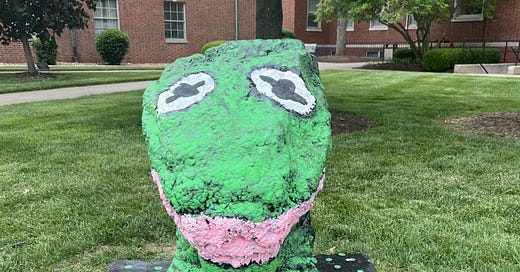What Kentucky Wesleyan College's sports cuts say about state of higher education
Is the era of self-sufficient college athletic teams upon us?
As someone with experience in public relations, I advocate for as much transparency as possible when organizations make negative announcements. So, in that respect, I commend Kentucky Wesleyan College and its athletic department’s brutally honest press release last week disclosing the need to cut eight varsity sports from its offerings.
Since the pandemic began, I have tracked the number of sports programs added and dropped across four-year institutions, invariably arriving at the same conclusion: enrollment-driven institutions (primarily at the Division II, Division III, and NAIA levels) use athletic teams as a way to grow enrollment on their campuses. I have written about this a lot for Athletic Director U. (a link to those articles can be found here). On the surface, this seems like a sound strategy to increase enrollment.
Recently, however, I am seeing cracks in this logic. First, the number of sports being added so far in the Fall of 2023 is down considerably from previous years. NCAA Division III schools added 28 new sports in August and September 2022. During the same two-month stretch in 2023, Division III institutions added just nine new programs. That trend line is more pronounced in Division II where the number of new sports added fell from 20 in Aug-Sept. 2022 to just five in Aug-Sept. 2023. This suggest there is a cost-benefit ratio for having sports teams, and many universities may have hit that threshold.
Division II is where Kentucky Wesleyan competes, and that brings me to my second point. KWC began last week with 22 varsity sport offerings, but announced it was cutting eight sports, a 36 percent reduction. Admittedly two of those sports, men’s bowling and cheer, both non-NCAA sports, are being moved to club status.
Let’s examine some context about Kentucky Wesleyan from the Equity in Athletics Disclosure (EADA) website. KWC reported 751 full-time undergraduates in 2021-22 (the most recent reporting year) and 395 unduplicated athletic participants, equivalent to 53 percent of its student body. The EADA report lists 72 all track combined athletes, though some of those might be duplicated on other rosters. So, this decision impacts roughly 1 in 10 KWC students.
Vice President of Athletics Mark Shook was remarkably transparent in this announcement.
Shook’s quote regarding the “reduction of tuition revenue that is being generated currently by fewer number of students who are attending colleges across the country” is telling in the wake of this 53 percent athlete number. It suggests, to me, that in order for athletics to operate at KWC, it relies on non-athlete tuition to help meet overall athletic expenses, which, in 2021-22, totaled $6.8 million. It also implies the college believes it is better off with, potentially, 10 percent fewer students (if all track athletes transfer) than it is paying the expenses generated by the these programs.
This also continues another trend. Universities which have more athletes than non-athletes may be more at risk of financial calamity. Finlandia University in Michigan closed this past spring. Its percentage of students as athletes, according to 2021-22 EADA data, was nearly 63 percent. Birmingham-Southern College, presently engaged in a lawsuit with the state of Alabama over a loan needed to continue operations, has grown to 51 percent of students as athletes (using the same EADA data).
Would KWC cut these sports if they were self-sufficient, meaning they did not need the support of other tuition-paying students to cover expenses? It is an interesting question and would open the idea that individual athletic teams must become profit centers on their campuses.
To be clear, I don’t know Mark Shook or anyone at Kentucky Wesleyan College. My Google search suggests KWC is a quaint little campus in Owensboro, the fourth largest city in Kentucky, situated across the Ohio River from Indiana in the western part of the state. The campus statue of Minerva, the Roman goddess of wisdom, is regularly painted in a whatever color strikes a student’s fancy.
Its athletic teams compete in the Great Midwest Athletic Conference, made up primarily of schools in Northern Ohio and Michigan, necessitating long, and expensive, bus rides. No doubt the cost of travel to competition contributes to the challenges of athletic operations.
I am confident the decision to cut these sports occurred after exhaustive analysis. Each campus is its own unique case study and we should always exercise caution when trying to find similarities across institutions. That said, I believe we are entering a weird time in higher education and sense further contraction, both in terms of school closures and the number of sports sponsored, is ahead. The data already suggests the trend toward adding sports at enrollment-driven institutions may have passed and, if KWC’s process is any indication, who knows how college athletics will look in five years.






